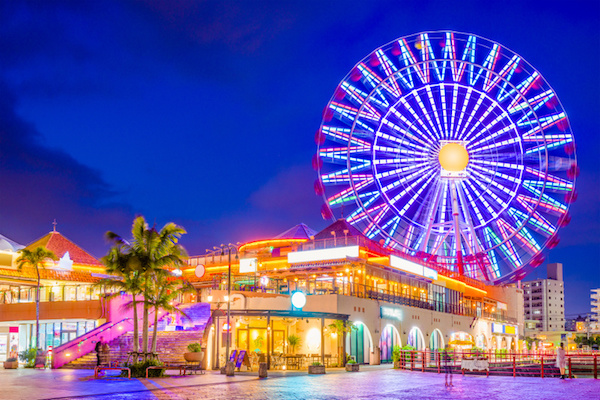
DIABLO SOUND DEPENDS ON QSC FOR THEME PARK SOUND

LA area sound company Diablo Sound counts on QSC products including K Series powered loudspeakers, KLA Series powered line array loudspeakers, TouchMix Series compact digital mixers along with the Q-SYS Platform and CXD-Q Series power amplifiers to create realistic and impactful sound experiences for theme park audiences.
Dalzell was the first to graduate with a MFA in theatrical sound design from a program at University of Cincinnati in the mid-’90s. Immediately thereafter, he was hired by Walt Disney Imagineering, the division of Disney that crafts all the technology for their park attractions, eventually going on to create his own firm, Diablo Sound, which now “gets pulled back in as a contractor for huge park operators.” He describes his discovery of QSC:
“We first bought a couple of K8s and discovered they punched way above their weight class and that we could use them on bigger projects than we thought. Then we started buying the K10s, which are really our workhorse. They’re light, easy to load on and off trucks, easy to fly with the built-in rigging hardware, and our clients like them,” says Dalzell. “Our rental stable has about 20 of the K10s and 10 K8s, and they’re out working all the time. Plus, if you’re investing in your inventory at about $1000 per loudspeaker as opposed to $5000, it takes a lot less time for that investment to pay itself off.”

Sound system design for theme park attractions has particular challenges that might give pause to even a seasoned rock-concert engineer. “One of the biggest challenges is the intense use profile,” says Dalzell. “A loudspeaker in a theme park attraction is going to operate maybe 12 hours a day, seven days a week. It will see as much use by the end of its fourth month as a rock tour does at the end of its tenth year. We have to think in terms of value-engineering. For example, ‘What’s the smallest amplifier that’ll create maximum output if it’s running at 80 to 90 percent of its rated power for its entire operational life?’ It’s a little like the ‘audio by the acre’ you do for airports, but with high fidelity for dialogue, music and sound effects. QSC gets us all that and the crucial durability at a very attractive price.”
Theme parks are also known for theme restaurants, many of which feature live music in addition to their rock and movie memorabilia. For these venues, Dalzell and his clients have found the QSC TouchMix Series of digital mixers, which feature touch-screen interfaces and can be controlled from a smart mobile device, up to the task.
“These restaurants want to have a certain atmosphere and don’t want a big console in a sound booth that’s visible to the public,” he explains. “With TouchMix, to be able to pull out an iPad and mix discreetly while you walk around the venue and check the sound is perfect. One recent client was so happy with this aspect of the TouchMix-30 Pro that they want to go with QSC all the way. We just installed KLA Series powered line array loudspeakers there two weeks after a previous contractor had sold them a different array system that nobody liked!”
“TouchMix is also great when you might have the same band for an entire week, which some of these venues do. If you’re trying to build consistency and you might have engineers coming in and out who are of varying skill levels, the ability to build up the mix on a TouchMix, refine it, and then access it night after night via a recall function is ideal,” he adds.
In the realm of theme park sound, another endemic challenge is attendees who are moving but need a consistent a listening experience as if they were sitting still at a concert. “In something like a coaster-style ride or Halloween horror maze, it’s not unlike musical theatre in that we may need 20, 30, 40, or more output channels, expounds Dalzell. “Just like theatre, you design the system to the production and you mix in the field. I might need a vocal coming from in front of the riders, someone screaming behind them, music in both those loudspeakers, and a thunderclap in the next room that’s not allowed to bleed through. I might be mixing down 120 audio streams into 80 loudspeakers. The Q-SYS Platform with native CXD-Q Series network amplifiers offer tools to do that, as well as the ability to work in 8Ω and 70V modes. The latter is better if you plan on hanging a [passive] loudspeaker at the end of 500ft of cable!”
According to Dazell, his future plans include adding K.2 Series loudspeakers as well as the KS212C powered cardioid subwoofer to their rental inventory.
“The KS212C in particular offers the kind of tight low-frequency pattern control that we need,” he adds. “I’m also excited about the K.2 Series loudspeakers having delay built right into the cabinet. In a quick install for something like a wedding or smaller concert, you may need to set up delayed loudspeakers but not want to bring in all your rackmount delays. You want someone at the back of the room to hear the sound as clearly as if they were standing at the front of the stage, but not turn up the onstage loudspeakers so loud that you blow away people who are in front.”
“Here’s the trick,” he continues. “The human brain mainly locates sound based on arrival time, not volume level, and there’s about a 40ms window in which the brain will merge sound from two point-sources into one. You cue in on wherever the sound came from first. So, I can delay loudspeakers towards the back of the room so the sound arrives just a few milliseconds after the sound from the main loudspeakers. Everyone will hear the same thing, clearly, with the sound appearing to arrive mainly from the stage, without anything getting too loud. With delay built in, the QSC K.2 Series will simplify this sort of setup, and we’re looking forward to getting about half a dozen of those.”
Diablo Sound: www.diablosound.com
QSC: www.qsc.com
Australian Distributor: www.tag.com.au




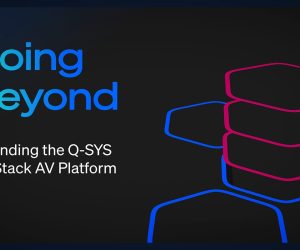
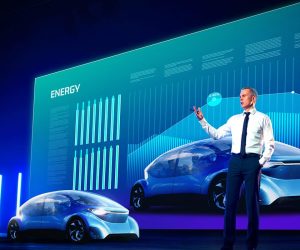
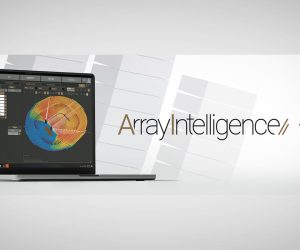
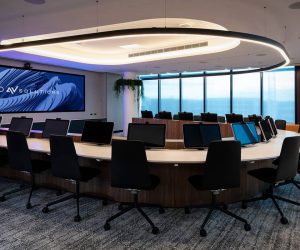
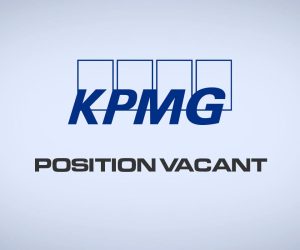
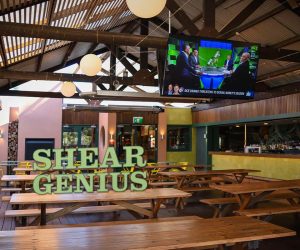

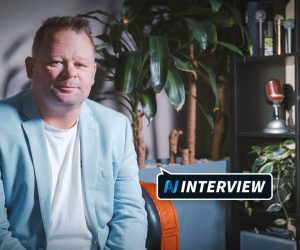



RESPONSES